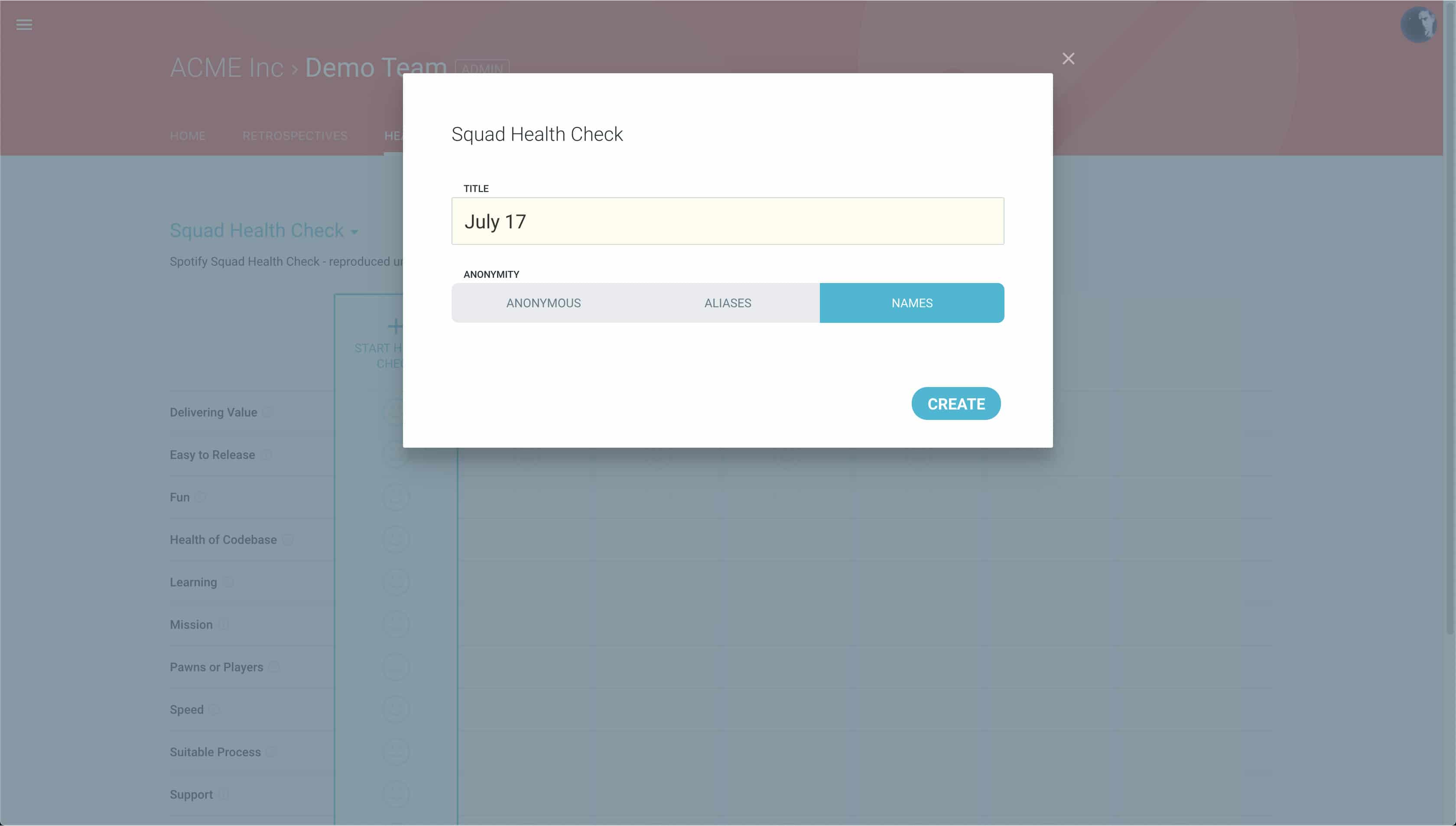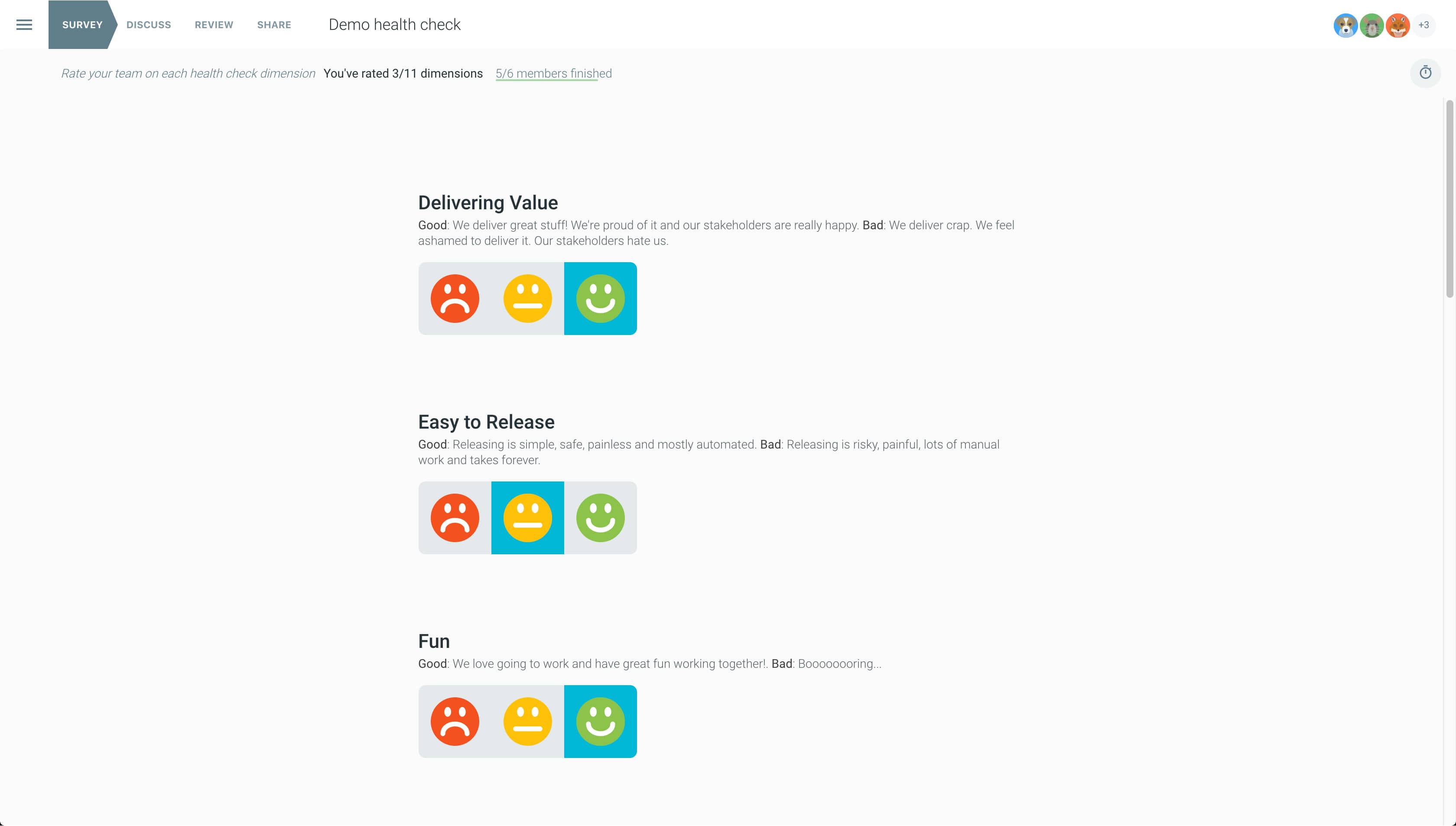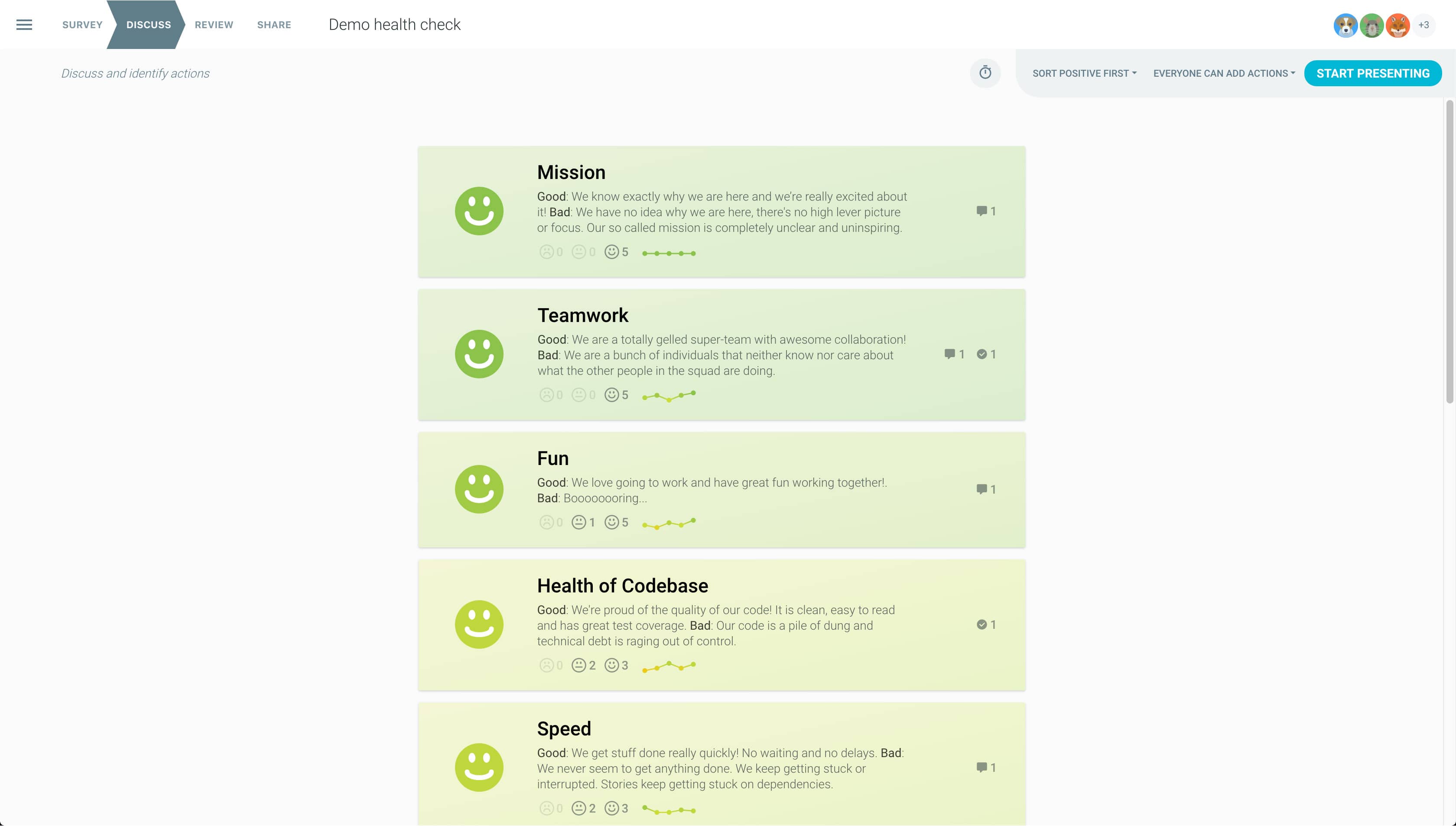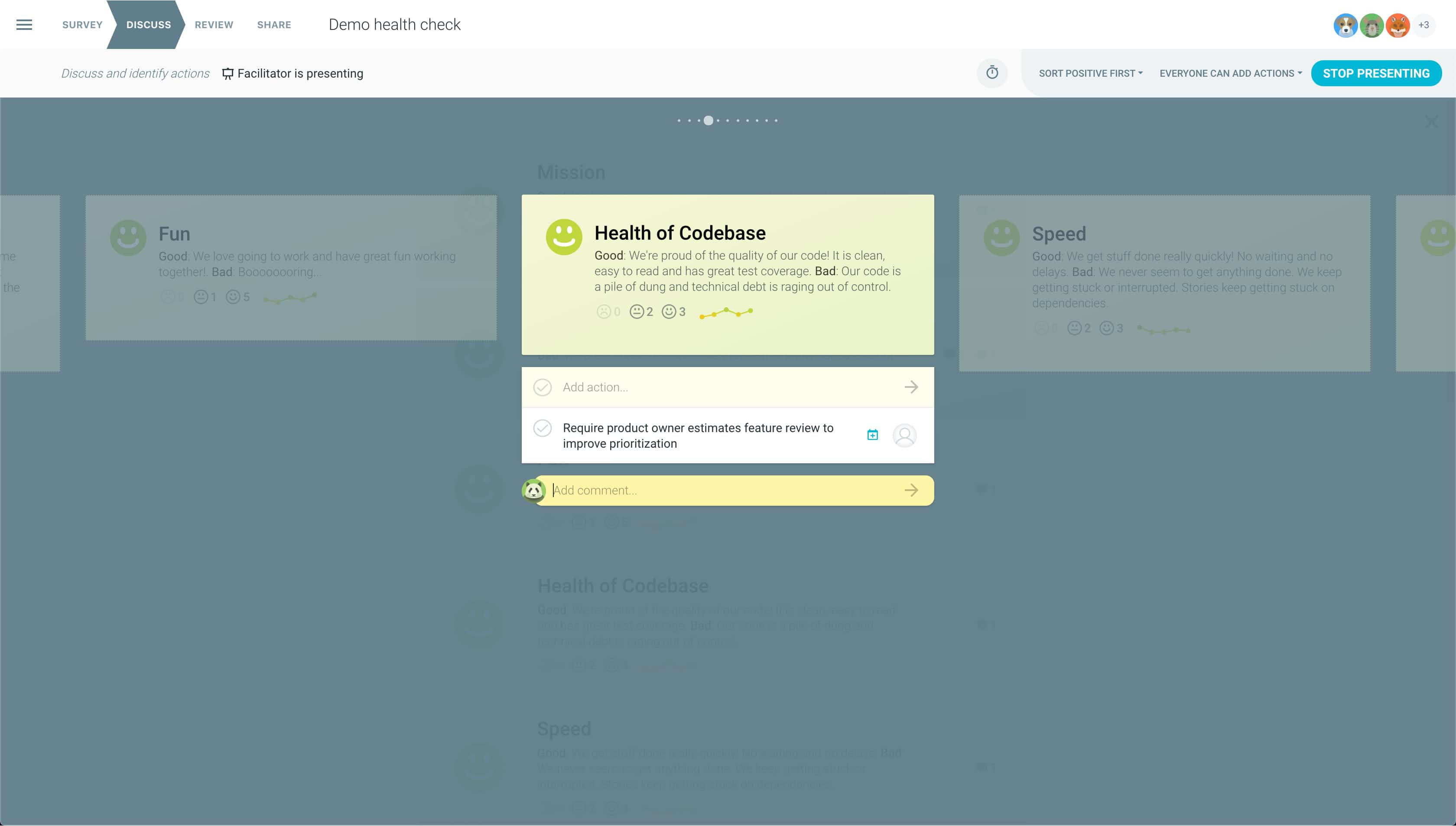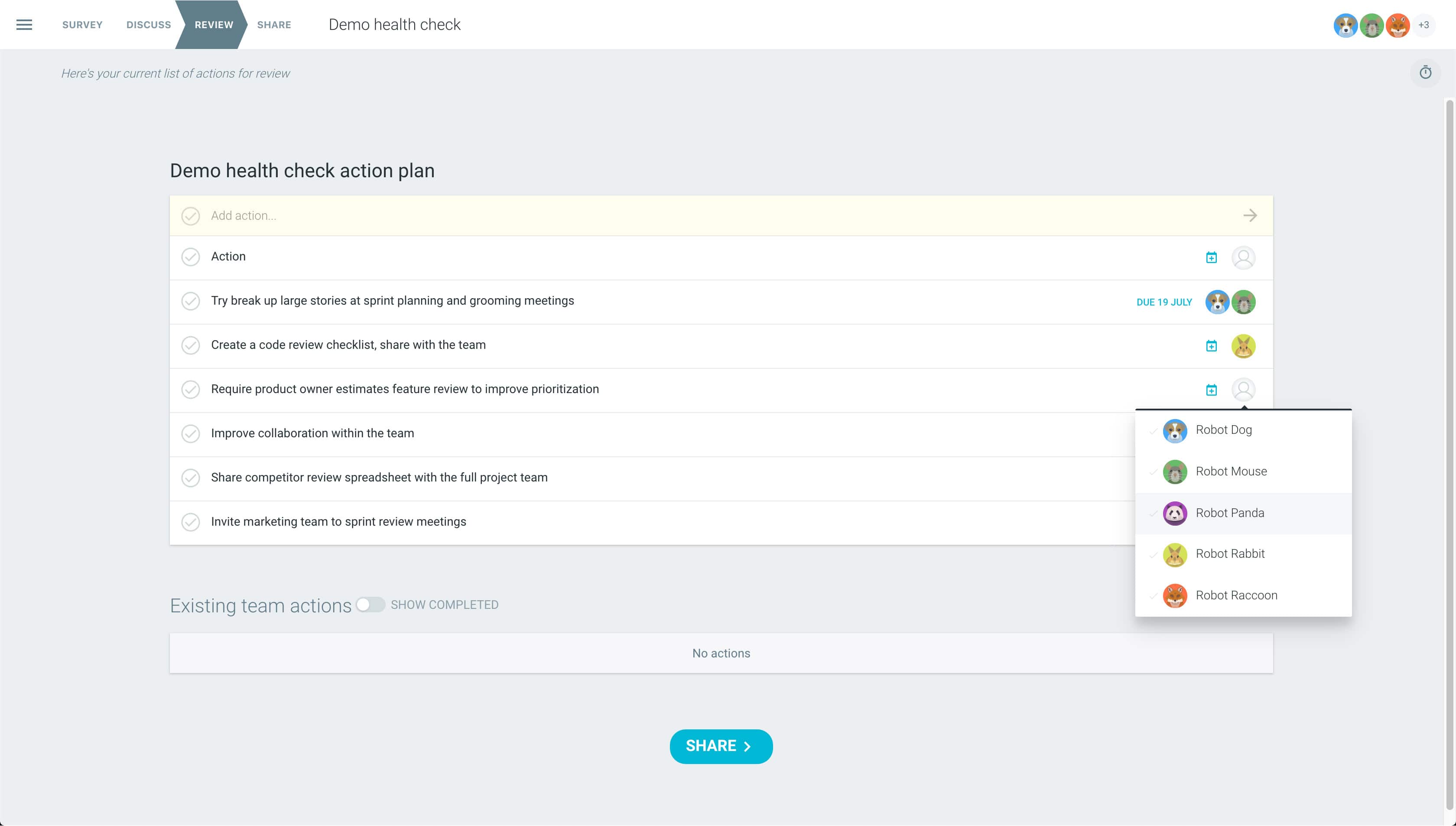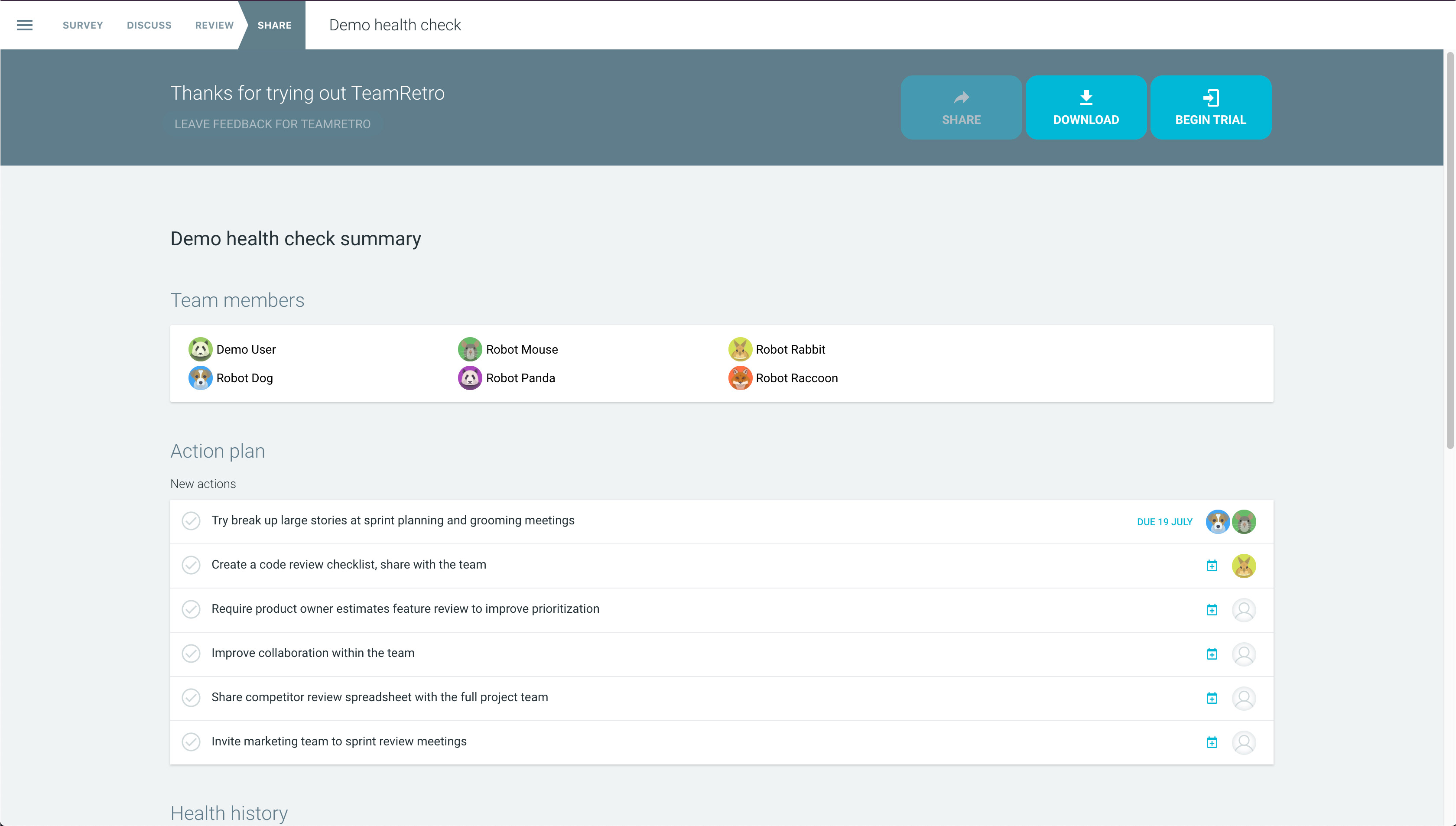What is the Scrum Ceremony Health Check?
A Scrum Ceremony health check can help your team measure the effectiveness, efficiency and regularity of the scrum practices that are demonstrated as part of their work. Identifying gaps or low scores allow you to find ways to improve team work and cadence to increase the chances of success and overall team happiness.
The Scrum Framework has 5 specific meeting events called ceremonies which have clearly defined goals, participants and time constraints, along with associated outcomes and artefacts.
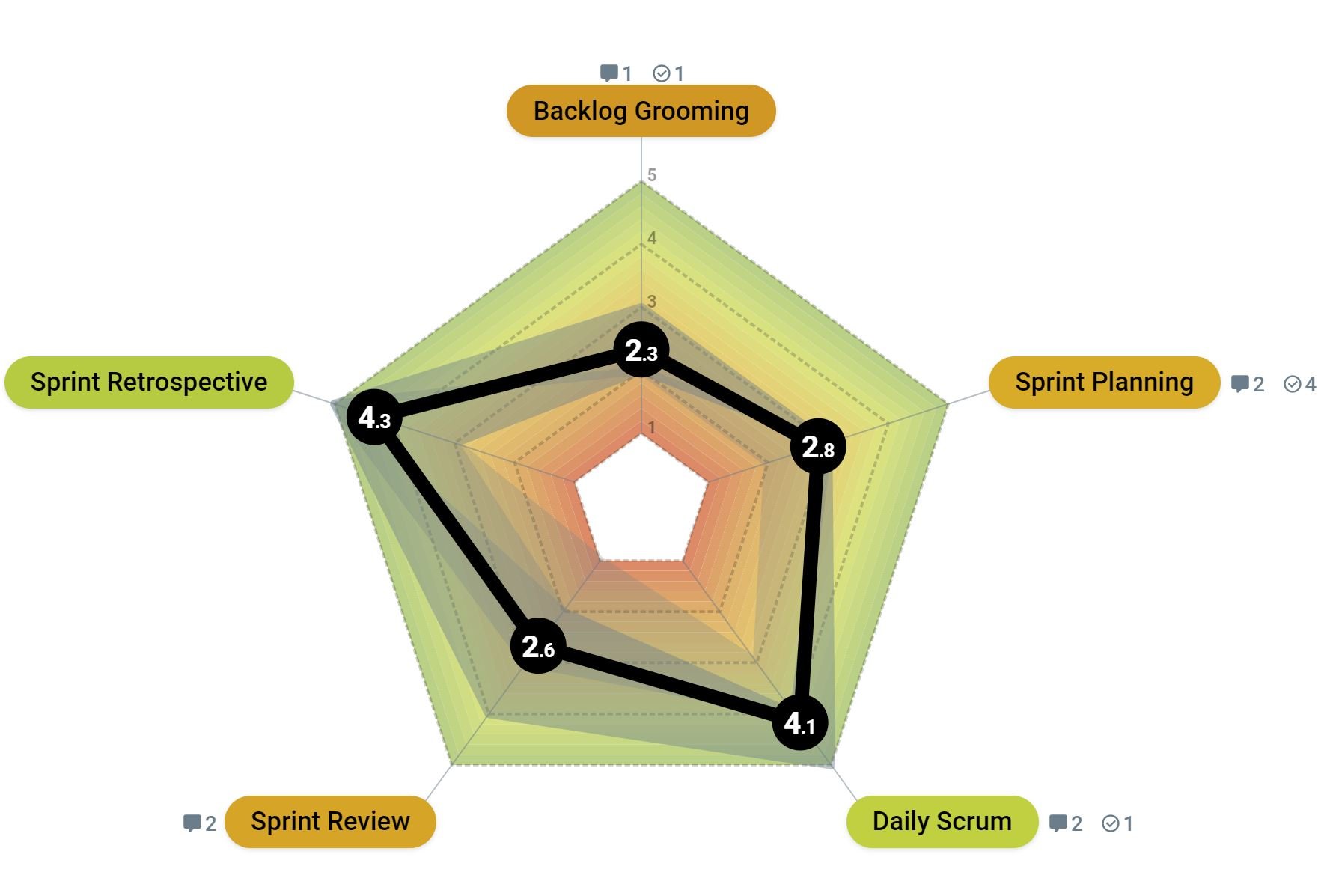
What are the 5 Scrum Ceremonies?
These are backlog grooming (product backlog refinement), sprint planning, daily scrum (stand up), sprint review (show case) and the sprint retrospective. Each of them serve a role in helping the team practice continuous improvement and to build a successful product. Find out more about each ceremony below.
These Scrum ceremonies are designed to help teams, including remote and distributed ones, improve the quality of their work (over 84%) and successfully deliver projects (62%). Instant, visual results can be sorted to better facilitate discussions, making it easier to run plays, develop growth strategies and address team impediments. Changes are tracked over time so that the team can see progression or identify new areas for improvement.
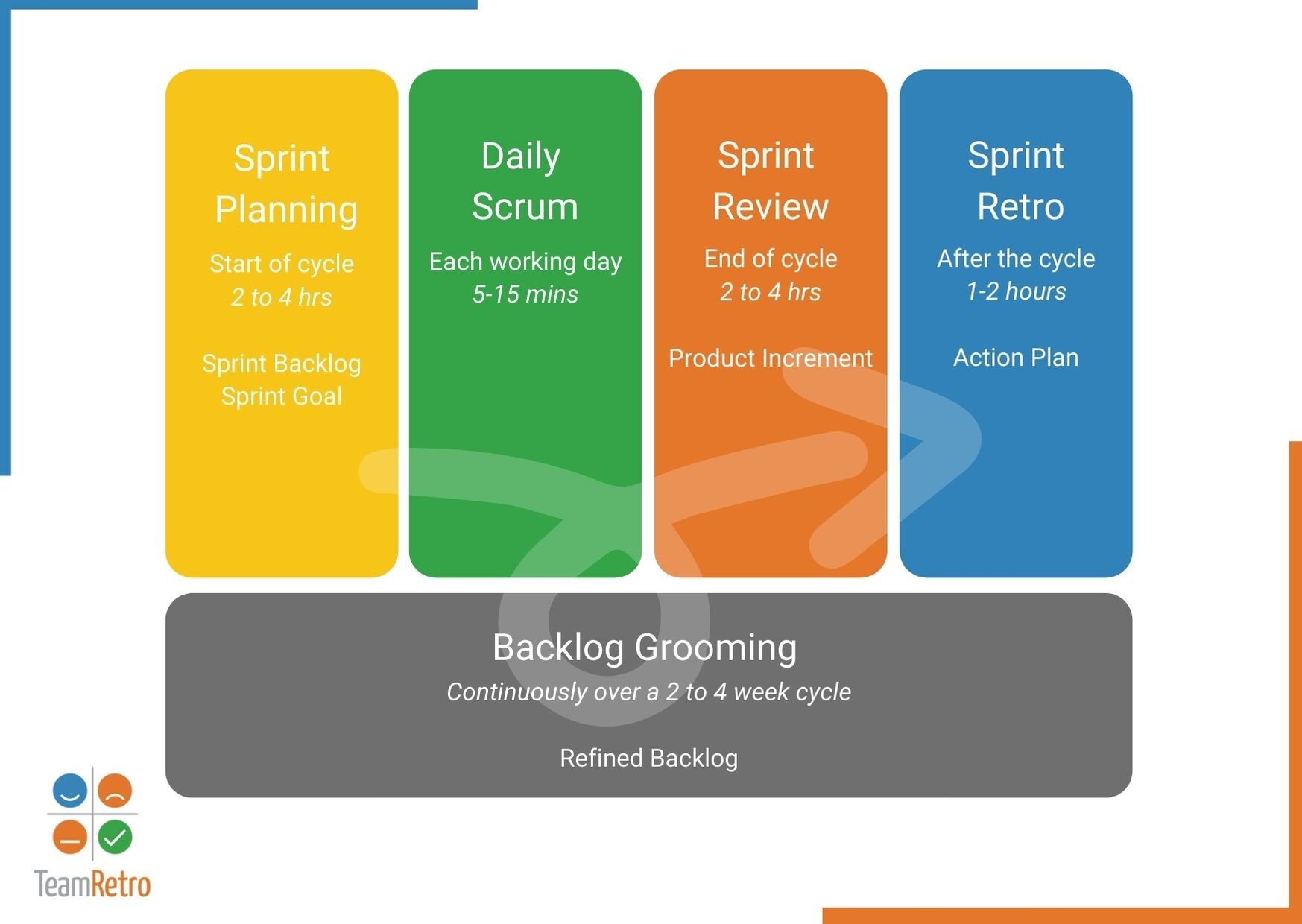
Scrum Ceremonies Health Check dimensions
The Scrum Ceremonies health check is a team self-assessment of the level of maturity based on the quality, cadence and effectiveness of each meeting. You can use the standard descriptions below or you can create your own definitions of success.
How to create a Health Check in TeamRetro
Your template is ready to go
Under Health Checks, select the health check you’d like to complete. Decide if you want to survey the team anonymously, using aliases or openly.
Reveal and discuss the results
Your health check data is displayed showing the average response and tally of each response. Sort dimensions by most positive, negative or mixed responses to make discussions more meaningful.
Keep conversation on track with Presentation Mode
Switch to presentation mode to sync devices making it easier to facilitate and focus conversations. Capture comments and actions along the way.
Review your action plan
Assign action owners and set due dates for new items and review prior actions. This action list can be tracked, shared or integrated into your other workflow tools.
Share the results
Great work, you are all done! Share the results with your team via email, download and print or publish to tools like Jira, Asana and Trello. Results can be tracked in your dashboard.
The Beginner’s Guide to Scrum Ceremonies
Scrum Ceremony #1
The product backlog is a list of all items that are potential features, fixes, optimizations or value adds for the customer. This needs to be constantly updated and refined based on customer feedback, new ideas, sprint review meetings results and changes in the market.
This ceremony is about refining the back log by adding, removing, re-prioritizing, clarifying, estimating and grouping items into epics. The goal is to product a clean and actionable backlog for sprint planning. This is usually the responsibility of the product owner but is assisted by the team, customers and stakeholders. There is no defined time box or frequency and relies more on currency and making sure that outdated, redundant or non-valuable are removed.
Scrum Ceremony #2
Each sprint is a recurring, time boxed cycle where team members focus on delivering value to the customer. Sprint planning meets to pull items from the product backlog to the sprint backlog based on what they can commit to complete during the upcoming sprint cycle. The artefact of this ceremony is the Sprint Backlog which shows the different tasks that have been committed by the team. This is the responsibility of the team to manage and own. The accountability and outcomes lies with them.
Part of this process includes coming up with the goal for the sprint, breaking up tasks to make it easier to estimate and to use experience and quantitative data to help them better evaluate how much time they need to complete each task.
Scrum Ceremony #3
Daily scrums, or the daily standup meeting is the most regular ceremony through the sprint. The team and the scrum master gather for up to 15 mins to share their current process and any blocks to them progressing forward. This meeting is essential for the team to check on progress, support each other, identify immedient impediments by asking 3 simple questions.
- What have you completed since the last meeting?
- What do you plan to complete by the next meeting?
- What is getting in your way?
This should be quick and not a meeting for solving problems. Ensuring that information is delivered quickly and meaningfully according to time is important to keep people on track.
Scrum Ceremony #4
This happens at the end of the sprint as a showcase of the work that has been achieved during the sprint. This allows the team to demonstrate their finished work to the product owner and stakeholders, discuss feedback and update the product backlog based on the discussion. This is showing working software, not just screen shots. Rather than just a demo it is a review process which allows for feedback on the usefulness and readiness of the items delivered and how it impacts customer use of the product. The artifact is the Product Increment which is the updated or new version. It may be a new interface, an integration or product feature.
Each product increment should satisfy the definition of done which are the requirements that the team believes makes the finished product whether to a set of criteria, performance KPIs or basically does what it needs to do. Any half finished work does not enter the sprint review and should be carried forward to the next sprint.
Scrum Ceremony #5
The sprint retrospective is a continuous improvement step for scrum teams to recognize each other and the work done to date but then look for opportunities to grow or level up. All members of the scrum team meet to brainstorm ideas as well as actions that they can take to improve the quality, velocity and overall happiness of the next retrospective.
The creation of action items is a key artefact of the sprint retrospective. It should be a safe space for honest and constructive feedback from each team member and varied from time to time to reduce meeting fatigue and to explore different perspectives and avenues over time.





